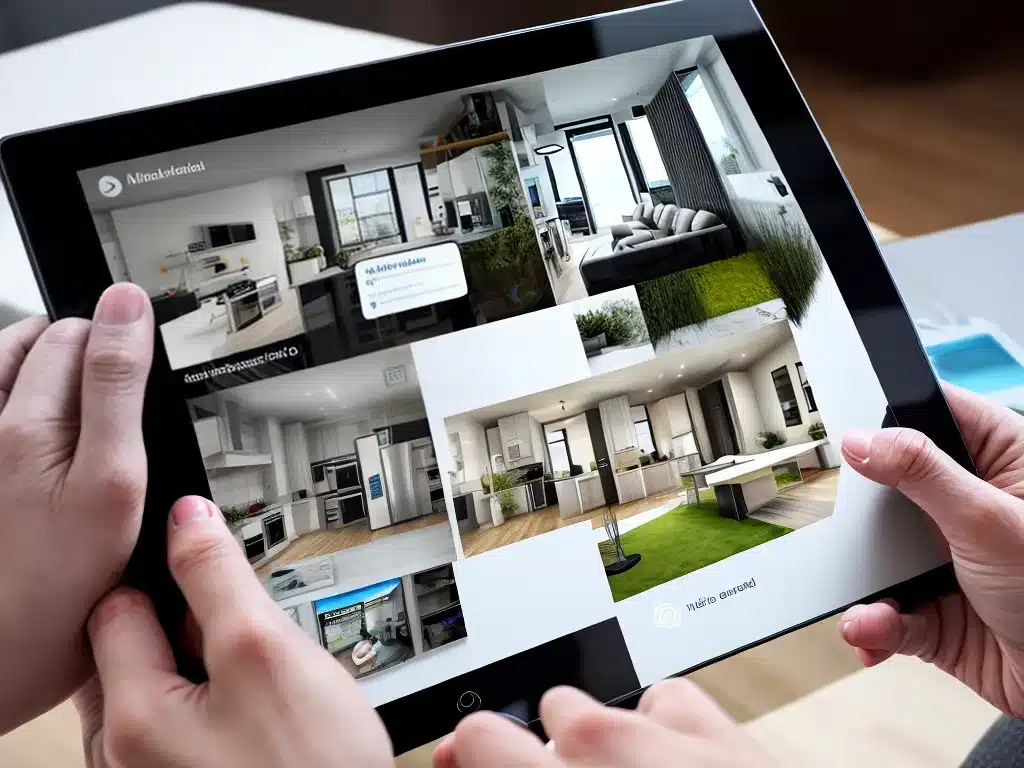
Envisioning the Connected Homes of 2025
Introduction
The year 2025 is not far off, and technological innovations are rapidly changing the way we live. As homes get “smarter” and more connected, the homes of 2025 will likely look quite different from those of today. In this article, I will explore some of the ways home technology and connectivity may advance in the next few years to create the connected homes of the future.
Ubiquitous Connectivity Through 5G and Wi-Fi 6
One of the biggest shifts will be the rollout of 5G wireless networks and Wi-Fi 6 routers. 5G will provide ultra-fast broadband cellular connectivity, enabling homes to have blazing fast wireless internet without the need for fiber optic cable installation. This will make connected devices faster and more reliable.
Meanwhile, Wi-Fi 6 routers will provide faster and more stable wireless networking compared to today’s Wi-Fi 5 standards. The combination of 5G and Wi-Fi 6 will make our homes hyper-connected hubs, with the ability to simultaneously run many bandwidth-intensive applications without any hiccups. This will enable all of our connected home devices to operate smoothly and quickly.
AI and Voice Assistants
Artificial intelligence (AI) and voice assistants like Alexa and Google Home will become even more capable by 2025. With better natural language processing and more knowledge about our individual preferences, AI assistants will be able to understand conversational commands, make recommendations and complete tasks more efficiently.
They may also take on new roles as smart home managers, able to not just control individual devices, but also automatically orchestrate the right combination of systems to create custom environments. For instance, I may be able to say “Alexa, I’m home” and have the lights, temperature, music and even robotic vacuum choreographed by the AI to suit my preferences.
Automation Through Sensors and Robotics
Our connected homes will also have many more sensors to track parameters like occupancy, temperature, humidity, air quality, noise levels, etc. Smart heating and cooling systems will self-adjust throughout the day based on real-time sensor data to optimize energy efficiency and comfort.
Robot vacuums will also become more affordable and capable, cleaning our homes regularly without any input from us. Small robots or drones may be used for security surveillance, for examining danger areas or delivering items within the home.
Seamless Device Integration
Perhaps the most important evolution will be seamless integration between all our smart home devices, regardless of the manufacturer. Open standards will allow appliances, sensors, entertainment systems, security components, etc. to all connect through a unified smart home operating system.
This will allow easy interoperability and automation between devices. With a single voice command, I may be able to turn on the oven, cue up a recipe video on the kitchen TV, start heating the home if it’s cold outside and notify me once the meal is ready. The smart home OS will orchestrate everything automatically, using AI to personalize the experience.
Concerns Around Privacy and Security
While the connected homes of the future offer many exciting possibilities, there are also legitimate privacy and security concerns to grapple with. As our homes get filled with internet-connected devices tracking our daily activities, preferences and behaviors, our personal data becomes increasingly exposed.
Strict regulations around data practices, encryption and cybersecurity standards will be important to protect against unauthorized access or data misuse. There also needs to be transparency from tech companies in how our smart home data is leveraged. Finding the right balance between functionality, convenience and privacy will be an ongoing discussion.
The Homes of the Future
In summary, the connected homes of 2025 will likely see major leaps in connectivity, automation, AI assistance, and device integration compared to what exists today. Daily home life will become hyper-convenient, with many tasks being handled automatically for us. At the same time, privacy and security considerations will be increasingly prominent. Overall, it is an exciting time that will bring many new possibilities! But we must be thoughtful about how these technologies are implemented responsibly.












